The scientific name for Epsom salt is magnesium sulfate which has caused much attention in horticulture because of its potential benefits to different plant species, especially the tomato plants. This blog will explore the science behind using Epsom salt and find out how it can improve the growth of tomato plants and increase fruit quality while at the same time reversing some common plant deficiencies. Readers will be able to have a thorough knowledge of how they can effectively use Epsom salt in their gardens by looking at modes of application, usage rates, and intervals. This paper will give a comprehensive summary backed up by scientific research and practical experiences that will enable readers to optimize their tomato farming ventures.
How Does Epsom Salt Benefit Tomato Plants?
The main benefits of Epsom salt to tomato plants come from its composition of magnesium sulfate. The photosynthesis process in tomato plants requires magnesium which aid in chlorophyll development that is used by the plant to convert sunlight into energy. Furthermore, it assists to increase the rate of nutrient absorption from the soil making it easy for them to acquire essential nutrients such as nitrogen, phosphorous and potassium. On the other hand, sulfate is able to foster protein synthesis and enzyme function, which are very critical to the overall health of a plant. By this combination, the vigor of tomato plants could be increased, thereby fostering strong growth rates, enhancing fruit sets, and creating better tomatoes.
Understanding epsom salt in your garden
Knowing Epsom salt’s chemical makeup and how it affects plant life helps one understand the role of Epsom salts in your garden. Epsom salt is a simple name given for magnesium sulphate that is easily accessible for growing healthy plants at any place received or grown indoors. For instance, green leafy vegetables require adequate amounts of magnesium for chlorophyll production during photosynthesis, in addition to other essential elements obtainable only through roots. Sulfur plays a vital role in protein synthesis as well as enzyme function. Without using excessive amounts, Epsom salts can improve tomato plant health and vigor, resulting in better quality production.
How epsom salt can help with magnesium deficiency
In plants lacking enough magnesium, interveinal chlorosis usually occurs, whereby veins remain green while the area between them turns yellow. This problem hampers not only photosynthesis but also growth and yield reduction. Normally this inadequacy may be solved effectively by applying right amount of Epsom salt. When there is already low levels of Mg+, one tablespoonful per gallon foliar spray solution sprayed onto leaves will ensure speedy absorption into the system (Delbridge).For soil applications, work one tablespoonful per hole into entire area around each tomato during planting or put into water for regular irrigation. For optimal nutrient uptake, the soil pH should be maintained at 6.0-6.5 (Delbridge). Only these measured applications can maintain chlorophyll production, thus enabling photosynthesis to occur and, therefore, improving the overall growth and productivity of a plant.
The role of sulfur and magnesium in plant growth
Sulfur and magnesium are two very important trace elements that have different functions but complement each other in plants development. Amino acids, proteins, and enzymes are formed with the help of sulphur as it is found in essential amino acid such as cysteine and methionine. Cysteine and methionine are examples of sulfur-containing compounds vital for plant metabolic processes, including photosynthesis and nitrogen fixation. Sulphur also plays a role in oil synthesis and vitamin formation thereby promoting general well-being of a plant.
Magnesium is intrinsic to chlorophyll molecule; hence, it acts as a co-factor during photosynthesis, where light energy is converted into chemical energy by plants (Delbridge 2001). Chlorophyll has approximately 2.5% magnesium highlighting its significance (Delbridge 2001). Magnesium also acts as activator for many plant enzymes involved in key biochemical reactions such as carbohydrate metabolism or nucleic acid synthesis (Delbridge 2001). Also, magnesium helps move sugars from leaves to other parts of the plant ensuring an equal distribution of energies needed for growth (Mikkelsenet al.,1997)
To attain the best absorption of magnesium and sulfur, it is important to maintain the soil pH within 6.0 and 7.5 for high availability. Magnesium content in soil should be targeted at between hundred and two hundred parts per million (ppm) while sulfur levels should stay close to twenty or forty ppm. A periodic examination of soil is therefore necessary so as to ascertain these quantities as well as adequately regulate them. This can be achieved through irrigation applications that are appropriate and proper use of fertilizers having a balanced ratio of nutrients needed for good growth of plants.
When Should You Use Epsom Salt on Tomatoes?
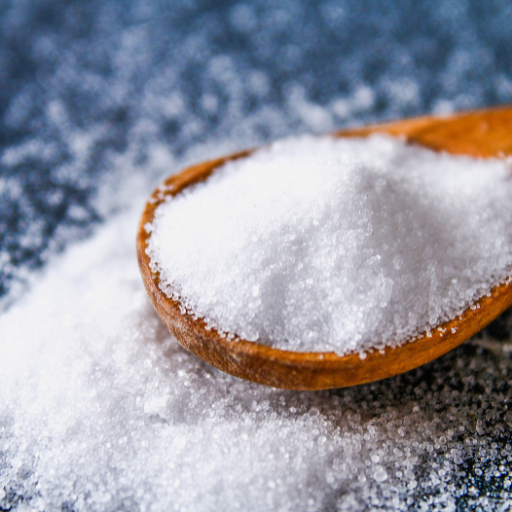
Epsom salt is the best for tomato plants that are in two major growth stages: at planting time and throughout the growing period. Use of Epsom salt during the planting process can initially help address magnesium deficiency and promote root health. It has been suggested that a tablespoon of Epsom salt can be deposited in the planting hole prior to transplanting. A foliar spray of an Epsom salt solution, which entails dissolving two tablespoons of Epsom salt in a gallon of water and applying every two weeks during the growing season, will suffice. This enables meeting ongoing magnesium requirements, especially during flowering and fruiting stages, to enhance chlorophyll production, thus preventing yellow leaf formation. Robust growth and effective flowering resulting in a good fruit set, among other things, are some of the benefits of using Epsom salts at these stages. One should also monitor closely the amount used so as not to overdo it.
Doing soil test
Soil testing is an important step towards understanding what nutrients make up your soil – pH level included – which directly affects plant’s health and productivity. A representative sample can be obtained by taking several samples from different areas within your garden or field for a soil test analysis. As you do this, you must dig down between 6-8 inches so as to get the right sample size. Once you have collected all this soil into one clean bucket, put it aside to dry before sending it to a laboratory or purchasing kits that will do it on your behalf. Garden shops usually offer testing kits with basic pH levels analyses as well as nitrogen (N), phosphorus (P) and potassium (K). Furthermore, for more sophisticated assays, you can have professional labs assess for extra minerals like magnesium, and sulfur, among others, that cannot be found via kits bought at local farming stalls! The findings will indicate precise instructions on what fertilizers has to be applied or removed from land based upon their outcomes for achieving optimum soil conditions through reclamation of deficiencies. A check-up should be conducted every two to three years to ensure continued fertility and well-nourished vegetation.
Using epsom salt during specific growth stages
Epsom salt can be applied at the seedling stage to establish a strong root system and encourage early vigor. The most suitable dosage is one tablespoon in a gallon of water, which should be used for watering seedlings every fortnight. This maintains an efficient uptake of magnesium right from the start.
To support blossoming flowers, it is important that increased nutrient requirements are met by the plant as its demand also increases. A foliar spray may offer special benefits at this time. Use one tablespoon of Epsom salt in a gallon of water for direct application on leaves after every two weeks. It facilitates rapid uptake of magnesium via the foliage.
For good fruit set and development, proper levels of magnesium must be maintained at the fruiting stage. Maintain this same spraying schedule but increase the frequency to once per week when fruits appear. This is because as energy gets directed towards producing fruits, it will still feed on nutrients continuously provided by fertilizers via this method too.
Technical parameters to consider include maintaining soil magnesium levels in the optimal range of 25 to 50 ppm. It is also necessary to adjust the soil pH within a range of 6.0 to 6.5 for effective magnesium uptake. Critical monitoring of soil moisture is also recommended, as excessive aridity may impede nutrient assimilation. To avoid competitive absorption dynamics, do not overapply potassium fertilizers, which could inhibit magnesium uptake. Therefore, regular soil testing is recommended to monitor nutrient availability and improve nutrient use efficiency.
Farmers will be able to improve plant health and yield at each crucial growth stage by following these instructions properly; thus maximizing benefits from Epsom salt application.
How to Apply Epsom Salt to Tomato Plants?
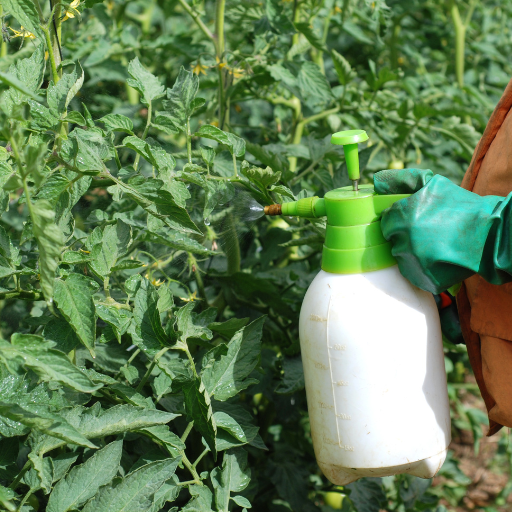
To use Epsom salt on tomato plants, start by combing a gallon of water with a tablespoon of the same. This will produce a solution which can either be used for soil drenching or foliar spraying. Pour the mixture at the base of each plant such that it circulates all around the root zone when you want to apply it to the soil. The process can be done once during planting and repeated monthly for every growing season. The leaves should be sprayed directly using a spray bottle filled with this kind of solution after every two weeks of growth period. It is through this method that they are able to obtain magnesium more rapidly through their leaves rather than roots leading to better fruiting and overall plant development. Before applying Epsom salts, water the plants first and do not use them in the hottest part of day because leaf burn may occur. Monitor plant health frequently and adjust application frequency accordingly if magnesium levels need to be maintained within optimal limits.
Different ways to use epsom salt
- Soil Drenching
- Interval: Once per month
- Mix 1 tablespoonful of Epsom salt into 1 gallon of water.
- Apply directly onto the soil at the base of each plant ensuring it reaches around the root zone evenly distributed across all plants. Make sure you moderately irrigate your garden before carrying out this practice.
- Magnesium has been proven beneficial in improving general growth and fruiting due to its efficient absorption by roots through increased osmotic potential.
- Foliar Spray
- Interval: Every 2 Weeks Only During Growth Stage
- Mix 1 tablespoonful of Epsom salt into 1 gallon of water.
- Then spray this liquid onto your young seedlings’. For best results, spray during morning or late afternoon to avoid leaf burn.
- Magnesium uptake is fastened by passing through leaf tissues making photosynthesis better and generally enhancing plant wellbeing.
- Pre-Planting Soil Amendment
- Interval: One time before planting
- Mix one cup of Epsom salt per 100 square feet of garden area.
- Before planting, mix the top six inches of soil with Epsom salt. This approach can be combined with other soil conditioners.
- Initial soil magnesium levels are increased to facilitate proper start-off for seedlings.
- Seed Soaking Solution
- Interval: Once before planting seeds
- Dissolve one table spoonful of Epsom salt in a gallon of water.
- After soaking them for about twenty four hours, plant the seeds.
- It makes the germination process faster and more uniform than normal.
- Compost Enrichment
- Interval: During composting process
- Sprinkle evenly over compost layers.
- Add 1 cup of Epsom salt per cubic yard of organic material used in making compost and mix well.
- It increases the amount of magnesium within such manure hence an enriched nutrient status when applicable on garden soils.
Making an Epsom Salt Solution
To create a solution of Epsom salt, dissolve 1 table spoon of Epsom salt in one gallon of water. Stir well to ensure that the salt is completely dissolved. This solution may be used for different gardening purposes including foliar feeding, pre-planting soil amendments and seed soaking. For foliar application, put the solution into a spray bottle and apply it on plant leaves either early in the morning or late in the afternoon to avoid leaf burn. Use specific guidelines for application intervals and methods when using this solution as a soil amendment or for seed soaking.
Tomato Foliar Spray Guide
To foliar spray tomato plants with an Epsom salt solution, pour the mixture into a clean spray bottle. The usual concentration is 1 tablespoon of Epsom salt per 1 gallon of water. Avoid spraying under intense sunlight, especially during morning hours, because it can cause sunburn on the leaves. It is important to douse both sides of the leaves thoroughly so that they can absorb the solution properly.
- Frequency: Apply every two weeks during the growing season.
- Spray Volume: Enough to soak all leaves without run off.
- Adverse Conditions: Do not spray when humidity is high or rain is expected within one day since these circumstances could wash away the spray.
Can Epsom Salt Help with Magnesium Deficiency in Tomatoes?
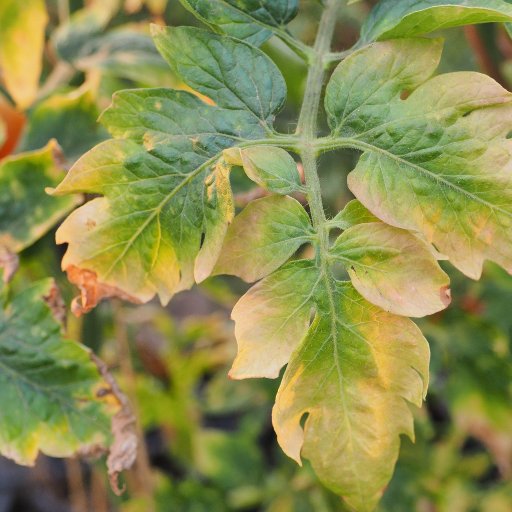
There is a condition of tomatoes called Magnesium deficiency that shows itself through yellowing between the leaf veins and poor fruit development. The chemical name for magnesium sulfate is Epsom salt which can actually alleviate this deficiency. It helps in making chlorophyll, which is absorbable and enhances nutrient uptake (Lupien 1992). For the best results it can be applied as soil drench or foliar spray. In fact, applying every two weeks throughout the season prevents such deficiencies leading to healthier and more productive plants. However, soil tests should be conducted prior to starting treatment because sometimes an excess of other nutrients may mimic magnesium deficiencies.
Signs of Magnesium Deficiency
The loss of magnesium in tomatoes starts with lower leaves at initial stage. At first there appears a discoloration known as interveinal chlorosis within tomato leaves where tissue between veins turns yellow while the veins remain green due to lack of enough minerals inside them. It may produce small brown necrotic spots over these areas with time after turning yellow color over time. These leaves may brittle up and curl up or down.
This deficiency can technically be confirmed using leaf analysis; hence Mg levels should be maintained between 0.25 to 0.45% dry weight basis in mature plant tissue analysis (Kidd & Tiffin 2008). There are different soil tests that could point out the possibility of magnesium deficiency when such tests show that optimum soil content should vary from 25-50 ppm for Mg; all other factors remaining constant (Goode et al., 2014). Consistent checking will prevent further development A good example would be when Tomato plants exhibit no specific symptoms even though they are affected by some major disease like late blight.
How Epsom Salt Can Help Deal with Yellow Leaves
Magnesium is the central atom in a molecule of chlorophyll, meaning it must be present for photosynthesis to occur. Absorbing light energy through chlorophyll is what makes plants green, and if magnesium is low, chlorophyll decreases, causing yellowish leaves or chlorosis. Magnesium sulfate, known as Epsom salt, when applied on the soil or plant foliage, will provide an instant supply of magnesium.
The following parameters should be noted when using Epsom salt to correct Mg deficiency:
- Foliar Spray Application Rate: Mix 1 tablespoon (about 15 grams) of Epsom salt in one gallon (3.78 liters) of water. Use a spray bottle to apply this mixture on the leaves ensuring uniformity. This treatment should be carried out after every two weeks during the growing season.
- Soil Drench Application Rate: Dissolve one tablespoon (about 15 grams) of Epsom salt in one gallon (3.78 liters) of water and apply around the base of the plant every four to six weeks.
- Leaf Tissue Analysis Parameter: Keep Mg content between 0.25% – 0.45% of dry leaf weight for sufficient levels
- Soil Test Parameter: Maintain soil magnesium levels within the optimal range of 25-50 ppm.
It is important that these conditions are responded to quickly so as to avoid over-application since too much magnesite may disturb nutrient balance by affecting other major nutrients such as calcium and potassium (Badalucco et al., 2017). Regular soil and tissue tests will ensure that nutrient levels do not become unbalanced leading to healthy plants throughout their life cycle.
The significance of doing a soil test
It is crucial to conduct a soil test so as to know the nutritional basics of your soil, which will, in turn, enable you to make informed choices about planting and fertilizing. Evaluating the pH level as well as determining the availability of such important nutrients as nitrogen, phosphorus, and potassium is vital for specific interventions that enhance plant growth and productivity. Contaminants or imbalances can be detected in soils through examination by sophisticated laboratory instruments. Regular soil analysis allows fine tuning to bring about a balanced nutrient profile that optimizes crop health and yield while preventing undue use of fertilizers leading to environmental problems.
Does Using Epsom Salt Prevent Blossom End Rot in Tomatoes?
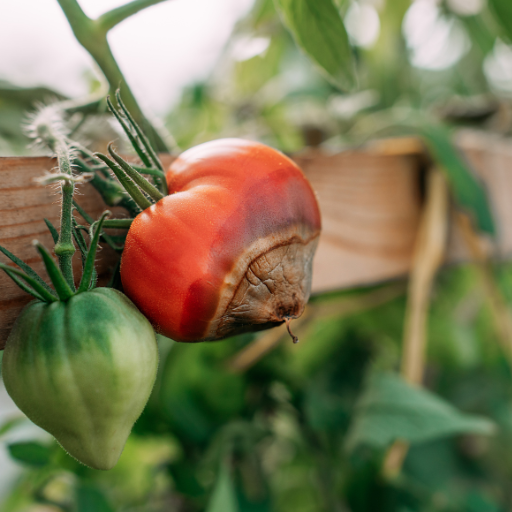
Caused by calcium shortage in fruits; often made worse by watering inconsistently, blossom end rot in tomatoes is mainly due to a calcium deficiency in the growing fruit which is usually intensified through irregular watering. While magnesium sulfate is composed of Epsom salts, it does not provide the requisite calcium that will cure or prevent blossom-end rot. At times, this might worsen the situation as it increases the magnesium content of soil, causing competition for absorption with calcium. Thus, the most effective way to prevent this problem is to maintain soil moisture and adequate quantities of calcium, which can be realized through proper fertilization including using gypsum or calcium nitrate that are rich in this element.
Understanding Blossom End Rot and Its Causes
Blossom end rot is not a disease but a physiological disorder whereby water-soaked areas develop at the blossom end of fruit and enlarge into dark leathery spots eventually. These water-soaked areas increase, darken, and become leather-like to the touch. Localized deficiency in fruit Ca contents whereas overall sufficient levels are present in soils or plants is the primary cause of this disorder. Calcium transport to developing fruits may be hampered due to wide fluctuation in soil moisture level, excessive nitrogen application and root injury from cultivation.
- Soil pH: Optimal pH for maximum uptake stands at 6.5-6.8
- Soil Moisture Consistency: Soil moisture consistency is necessary to avoid periods of drought stress or overwatering.
- Calcium Levels: Calcium should be available within specified rates ranging from 1500 ppm – 2000 ppm.
- Fertilization Practices: Do not use high-nitrogen fertilizers during fruit set; consider adding gypsum (22-23% Ca) or calcium nitrate (17% Ca), which are also rich sources of Ca.
The Role of Calcium and Magnesium in Blossom End Rot Prevention
Calcium plays an important role by strengthening cell walls that prevent tissue breakdown, which results in blossom end rot. Adequate soil calcium levels ensure that the roots can take calcium to the fruits as required. For efficient calcium absorption, it is important to maintain a pH between 6.5 and 6.8 in the soil, besides maintaining uniform soil moisture for easy nutrient movement.
Magnesium also plays a vital role in plants as it is involved in chlorophyll formation and enzyme activation. Whilst magnesium is an essential element, excessive amounts may inhibit calcium intake, worsening blossom-end rot condition. This calls for prudent management of soil magnesium levels vis-à-vis calcium levels, with emphasis on a balanced ratio so as to avoid deleterious effects on uptake by roots (1:8 Ra).
Methods to Prevent Blossom End Rot Using Epsom Salt
- Soil Testing: Conduct a soil test to determine the existing magnesium and calcium levels and ensure a balanced magnesium-to-calcium ratio.
- Application Rate: Dissolve 1 tablespoon of Epsom salt in 1 gallon of water. This solution can be applied directly to the soil around the base of calcium-deficient plants.
- Timing: Start Epsom salt applications early in the growing season and continue every two to four weeks. Consistent application helps maintain optimal magnesium levels without disrupting calcium uptake.
- Foliar Spray: For a more immediate effect, use a foliar spray by dissolving 1 tablespoon of Epsom salt in a gallon of water. Spray the solution onto the leaves for quick absorption, especially effective if deficiency symptoms appear.
- Integrated Approach: Combine Epsom salt application with other best practices such as maintaining soil pH, ensuring consistent moisture, and using calcium-rich fertilizers. This holistic approach guarantees the comprehensive management of mineral imbalances, mitigating the risk of blossom end rot.
Are There Any Risks or Misconceptions About Using Epsom Salt?
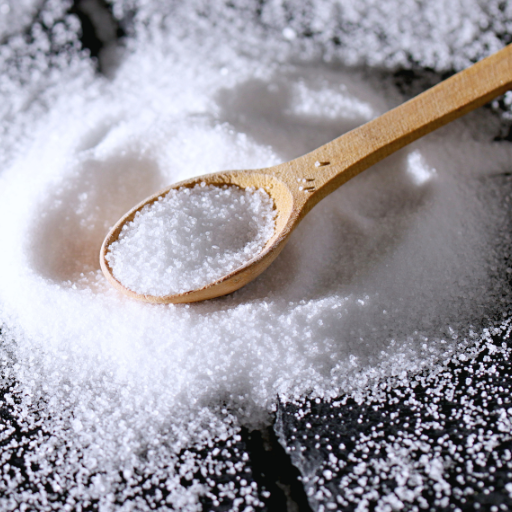
Although it could be useful in reducing magnesium deficiencies, Epsom salt also has several risks and misconceptions. For one thing, overusing it can result in a magnesium soil overdose that may interfere with the absorption of calcium or potassium, among other essential nutrients leading to further imbalances. Some gardeners incorrectly think that this substance cures all plant ailments, yet it is only effective on certain nutrient deficiencies. Other people believe that Epsom salt repels pests or enhances flowering in all plants, however scientific studies do not support such beliefs. Therefore, using Epsom salt requires caution and should ideally be done after conducting soil tests so as not to adversely affect soil health and plant performance.
Understanding the limitations of epsom salt
Nevertheless, knowing its drawbacks is also very important to avoid possible misuses. Primarily, it is recommended only for plants suffering from a lack of magnesium. The technical recommendations on how to use Epsom salt effectively are about one to two tablespoons per gallon of water through foliar spraying or application into the soil. However, excessive addition can cause excess magnesium presence, preventing uptake of other vital substances like calcium or potassium, which results in imbalance.
Secondly, some claims made about Epsom salts have no empirical evidence supporting them. For example, there is no science behind the conviction that the use of Epsom salts universally improves flowering, while others assert that they deter insects as well as pests too meaningfully (Nikolic et al. 2009). This means that what does research say about these salts?
Lastly, relying solely on Epsom salt as remedy for all plant issues can be misguided. Prior application must always precede comprehensive soil testing so as to determine specific nutrient deficiencies (Maathuis 2014). This ensures focused approach towards supporting overall soil health and plant life rather than worsening prevailing conditions. These top agricultural studies data show how important it is to practice balanced fertilization and incorporate multiple soil amendments tailored to specific soil and plant needs.
Overuse of epsom salt and its effects
Excessive application of Epsom salt can be harmful to both the soil and plants. Over-application may cause an accumulation of magnesium sulfate in the soil, which results in an imbalance and leads to a decreased absorption of other important nutrients like calcium, potassium, and nitrogen into the roots (Kozai et al. 2015). This “nutrient lockout,” commonly referred to as chlorosis, causes yellowing of leaves due to lack of iron uptake or can manifest itself as other deficiency symptoms leading to poor plant growth.
Accordingly, technical parameters suggest that a maximum single dosage should not exceed 2 tablespoons (30 grams) per gallon (3.8 liters) of water by foliar spraying or soil drenching which are done at least once every month. As outlined above, incorrect applications can be detrimental rather than beneficial even if well intended because they operate outside optimal ranges. Soil testing is therefore essential before such application.
Additionally, when magnesium levels are persistently high, it can cause environmental runoff problems leading to water contamination and negatively affecting aquatic ecosystems. Consequently, there is a need for a careful balance between promoting plant health through Epsom salt use based on evidence and taking care of possible environmental risks associated with it that may undermine the sustainability aspect (Nikolic et al. 2009).
Comparing Epsom Salt With Other Fertilizers
The primary composition of magnesium sulfate is Epsom salt, which quite differs from other fertilizers in both nutrient composition and methods of application. For example, traditional fertilizers such as NPK (Nitrogen-Phosphorus-Potassium) fertilizers contain a wide range of important nutrients necessary for the growth of plants, root establishment and well-being. A balanced fertilizer, on the other hand, like 10-10-10, will have 10% of nitrogen, phosphorous, and potassium, respectively, which takes care of basic nutritional requirements.
With respect to the method of application, Epsom salt usually comes as a foliar spray or soil drench with a recommended dosage of not more than two tablespoons (30 grams) per gallon (3.8 liters) once every month. On the contrary, granular formulations are often used for NPK fertilizers whose rates differ widely based on recommendations given depending on crop type, formulation specifics and soil type but this is generally between one and two pounds per 100 square feet for general gardening purposes.
In addition, organic fertilizers, such as manure or compost, are slow-release sources of nutrients, including nitrogen, phosphorous, potassium, and trace minerals. These additions also enhance soil structure while increasing microbial activity, thereby promoting sustainable soil health. Depending on the kind and age, 1-2 inches of compost is usually applied over the top six inches of soil.
While Epsom salt may be good because it has got magnesium and sulphur that helps with plant growth especially in soils that are lacking magnesium however care must be taken when using it so as not to create an imbalance in nutrients availability while traditional NPK’s along with organic manure can have many more nutrient options in relation to different types of plants as well as soils. It is very important to carry out a soil test before applying any type or quantity of fertilizer so that you can maintain good plant health at the same time not affecting the environment.
Frequently Asked Questions (FAQs)
Q: What are the benefits of using Epsom salt for tomatoes?
A: Epsom salt is good for tomatoes as it provides magnesium, which helps improve the plant’s overall health. Magnesium aids in photosynthesis and helps ensure the tomatoes grow larger and more flavorful.
Q: How should I apply Epsom salt to my tomato plants?
A: You can dilute Epsom salt in water and either pour the solution around the base of the plants or use a spray bottle with the Epsom salt solution and spray directly onto the leaves on tomato plants. This will help the salt dissolve and be absorbed effectively.
Q: How often should I add Epsom salt to my tomato plants?
A: It depends on the current health and needs of your tomato plants. As a general rule, you can apply Epsom salt every two weeks during the growing season. It’s also helpful to conduct a soil test using a soil test kit to determine specific nutrient requirements.
Q: Can Epsom salt be used for seed starting?
A: Yes, Epsom salt can be beneficial for seed starting. By adding a small amount of Epsom salt to your tomato seed starting mix, you provide essential nutrients that can promote healthy plant growth from the very beginning.
Q: Is Epsom salt a substitute for tomato fertilizer?
A: No, Epsom salt isn’t a complete substitute for tomato fertilizer. While it provides magnesium and sulfate, tomatoes need other essential nutrients that a comprehensive tomato fertilizer would provide. Use Epsom salt in conjunction with proper soil and fertilizers for best results.
Q: Are there any vegetables, like tomatoes, that can benefit from Epsom salt?
A: Yes, other vegetables in your vegetable garden, such as pepper plants, can also benefit from the use of Epsom salt. The magnesium content is helpful for a variety of vegetables to ensure they grow healthy and strong.
Q: How does Epsom salt improve the health of tomato plants?
A: Epsom salt can improve the health of tomato plants by aiding in the production of chlorophyll, enhancing nutrient uptake, and deterring pests. Its application helps in developing stronger cell walls and improves the overall vigor of the plant.
Q: What should I do if I see yellow leaves on tomato plants?
A: Yellow leaves on tomato plants can sometimes indicate a magnesium deficiency. Applying Epsom salt to your tomato plants can help address this issue by boosting the magnesium levels, thereby reducing and preventing yellow leaves.
Q: Is there a specific time of day to apply Epsom salt to tomato plants?
A: It’s best to apply Epsom salt in the early morning or late afternoon when temperatures are cooler. This ensures that the plants can absorb the solution effectively without the risk of leaf burn during the hottest part of the day.






